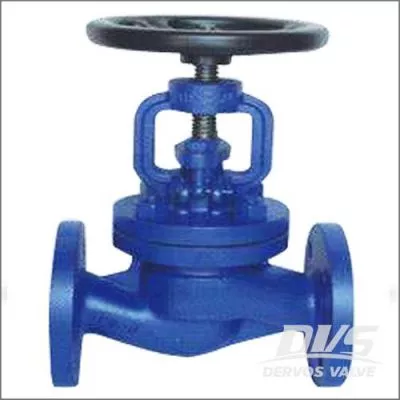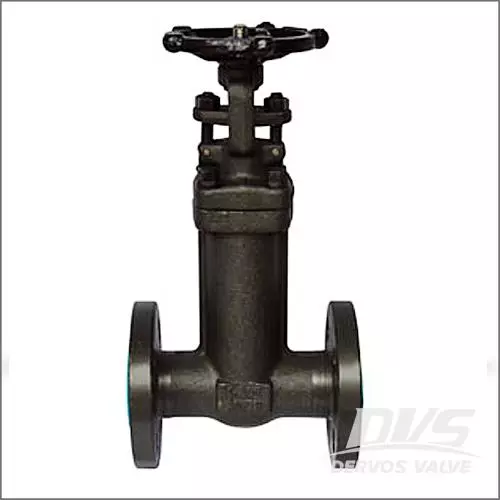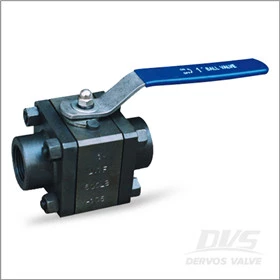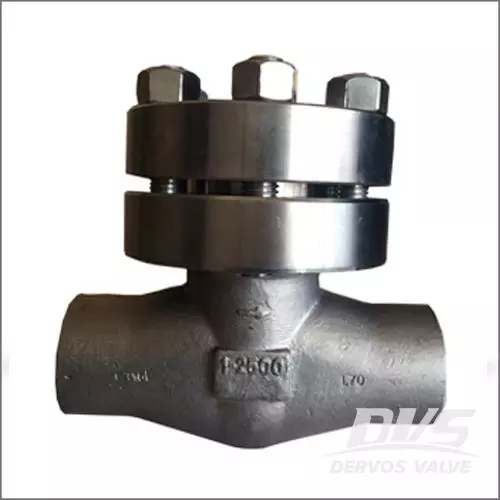Common forged valve pressure test methods and considerations-part one
So today, Dervos Forged Valve will come with you to discuss the commonly used valve pressure test methods and matters needing attention.
The commonly used media for forged valve pressure test comprise water, oil, air, steam, nitrogen and so on. The pressure test method for all kinds of industrial valves containing pneumatic valves is as follows:
1. Forged globe valves
The strength test of the cut-off valve usually refers to the processes of putting the assembled valve in the test frame, opening the valve disc, injecting the medium to the specified value, and checking whether the valve body and valve cover are sweating and leaking. The strength tests can also be performed on a single piece, while the sealing test can only be performed on the cut-off valve. During the test, the stem of the cut-off valve is perpendicular, the disc is opened, the medium is introduced from the bottom end of the disc to the specified value, the filler and gasket are checked, the disc is closed when it is qualified, and the other end is opened to check for leakage. If the valve strength and sealing test are to be done, the strength test can be done first, then the pressure reduction to the sealing test specified value, check the filler and gasket, and then close the disc, open the outlet to check whether there is leakage on the valve sealing surface.

2. Forged gate valves
The strength test of forged gate valves is the same to that of forged globe valves. There are two tightness test methods for the gate valve.
①The gate opens so that the pressure inside the valve can rise to the specified value. Then close the gate and immediately remove the gate valve, check the seal on both sides of the gate for leakage prevention, or inject the test medium directly into the plugging head on the valve cover to the specified value, in order to check the tightness of the gate valve. The above method is called intermediate pressure test. This method is not suitable for the sealing test of the gate valve below nominal diameter of dn32mm.
② Another method is to open the gate so that the valve testing pressure rises to the specified value, then close the gate, open one end of the blind plate, check whether the sealing surface leaks. Then, repeatedly make the above sealing tests until qualified. For the pneumatic gate valve, the sealing test of the filler and gasket shall be carried out before the sealing test of the gate plate.

3. Forged ball valves
The strength test of the ball valve should be carried out in the semi-open state of the sphere:
① Floating ball valve sealing test: The valve is in a semi-open state, inject the testing medium to one end of the floating ball valve when the other end is closed; and turn the sphere several times. The valve is closed when check the closed end, while checking the sealing performance of the filler and gasket, there must be no leakage phenomenon. The testing medium is then introduced from the former end to the other end to repeat the above test.
② Fixed ball valve sealing test: Before the test will be the sphere empty rotation several times, fixed ball valve in the closed state, attract the testing medium from one end to the specified value, the pressure gauge is to check the sealing performance of the introduction end, the accuracy of the used pressure gauge is at level of 0.5~1, the range is 1.6 times the testing pressure. In the prescribed time, there is no anti-high pressure phenomenon as qualified, and then introduce the testing medium from the other end and repeat the above test. Then, the valve is in a semi-open state, the two ends are closed, the inner cavity is full of the media, under the testing pressure to check the filler and gasket, there must be no leakage.
③ The three-way ball valve shall be tested for sealing at various positions.

4. Forged check valves
Check valve Test Status: The disc axis of a Lift Check Valve is in a position perpendicular to the horizontal line; the axis and disc axis of the swivel check valve channel are in a position approximately parallel to the horizontal line. When do the strength test, introduce the testing media into the inlet end to the specified value with the other end closed, make sure the valve body and valve cover without leakage as qualified. For the sealing test, introduce the testing medium into the outlet end, check the sealing surface at the inlet end, and check the filler and gasket are qualified without leakage.
